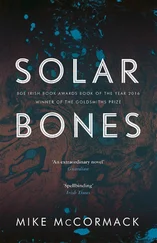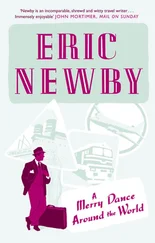The fourth wasn’t a published book either, but a hefty manuscript in a peculiar, leathery-looking binder. Typed on it were the title and the author’s name:
The Poor Man and the Lady by
Thomas Hardy
This was a draft of Hardy’s first novel, the only one not published. He’d held on to the manuscript nevertheless, and used parts of it in other of his works. Upon Hardy’s death, according to his biographers, his heart was surgically removed from his chest to be buried in his wife’s grave. The excised heart was left momentarily in a biscuit tin on his kitchen table. When no one was looking, Hardy’s favourite cat crept in through an open window, knocked the lid off the tin, and devoured part of his master’s heart. The leathery-looking binder holding this manuscript was actually made from the skin of that cat.
THAT FIRST TIME I looked into the glass case containing Four of the Great Lost Books of the West and read the accompanying notes, I asked Frank if these literary works really were authentic.
“Well, in their day, they were considered genuine by some experts and were included in authoritative bibliographies,” Frank said. “But now scholars using the latest scientific research tools have discredited them. There’s no doubt about it. They’re all definitely forgeries.”
I wondered in that case why he’d acquired them. I couldn’t believe anyone would want to read or collect such frauds.
“The truth is they seem so genuine you’d like to think they were the real thing,” Frank said. “Collectors are willing to pay a lot for fakes of this high calibre. Even when you already know they’re fakes, you can’t help admiring what perfectionists the forgers were and the sweat that must have gone into the work. First of all they had to master the exact mannerisms and styles of the authors — even their handwriting. Then the paper, the bindings, and the inks had to be so authentic looking that even experts would be taken in. I really believe the authors they were copying would have been flattered.”
I was skeptical about this downplaying of the difference between the fake and the genuine.
“You’re entitled to your point of view,” said Frank. “But I’d argue that some fake books, just like some fake paintings, are actually better than the artists they imitate. In fact, they’re too good — and that’s how they give themselves away.”
He offered to let me read the four books whenever I had time, and see for myself. The very idea made me uneasy.
RIGHT AT THE BACK of the Book Gallery, in a corner by his office, Frank kept his miniatures in an illuminated bookcase with glass doors. All of those I’d given him through the years were there, along with others he’d since bought. His latest acquisition was a nineteenth-century Complete Works of Shakespeare handwritten on the backs of seven hundred Victorian Penny Black stamps.
This masterpiece of crazed devotion was apparently produced in a penal colony in Australia by an Englishman — an actor who was serving twenty-five years for a botched bank robbery. The robbery was undertaken in London to help finance a travelling performance of The Tempest with himself playing Prospero. He was sentenced to deportation to Van Diemen’s Land for twenty-five years. He worked on his miniature Shakespeare for exactly that length of time, finished it, and promptly died.
“He copied it all out with strands of his own hair,” Frank told me. “You need a triple-strength magnifying glass to read it.”
HE WAS ESPECIALLY proud of the desk in his small office. One entire wall and most of the floor space were taken up by it. It was a labyrinthine Georgian bureau, five feet tall and four feet wide, checkered with drawers and cubbyholes and sliding panels. The bureau was made to be assembled in any location the buyer wanted. It could be taken to pieces and reassembled if it ever needed to be moved.
“We discovered that it’s a few days’ work to put it together, but it’s well worth the trouble,” said Frank. “I bought it from an Irish dealer who thought it was possibly the very desk where Swift wrote Gulliver’s Travels .” He opened one of the drawers and handed me what looked like a pair of eyeglasses. “The dealer found these in it. Try them on.”
I did try them on: the right eye magnified objects and the left minimized them. Frank was either a giant or a tiny puppet depending on which eye I closed. I started to feel quite nauseated and quickly took the things off.
“Glasses like these really were used in the Middle Ages by students of ancient philosophy,” Frank said. “They were fascinated by the idea of proportion in nature and in the universe in general. So that dealer who sold me the desk could have been right about Swift having owned it. You remember in Gulliver’s Travels the little people from Lilliput and the giants from Brobdingnag? Swift may have worn this very pair of glasses as part of his research.”
He saw I was impressed and smiled.
“On the other hand, Irish antiquity dealers are notorious for their far-fetched sales pitches, so he probably put the glasses in the drawer himself,” he said. “Anyway, Swift or no Swift, I love the idea and I’ve no intention of ever selling this desk.”
Another of his acquisitions was on display above the desk — a weird-looking wall clock. The preserved skeleton of a hare was stretched out in full flight, with an old-fashioned clock mechanism set into its ribcage. The clock’s ponderous tick-tock, tick-tock was quite at odds with the suggestion of the hare’s breakneck speed.
Frank could see how the clock delighted me.
“I hate to disappoint you, but it’s not for sale either,” he said.
I was beginning to get the feeling that he wouldn’t care if no one bought anything from Smith’s Emporium — it was more his private museum than a commercial enterprise.
From that night onwards, something changed in the way Frank and I got along. He couldn’t hide his satisfaction that I’d been so clearly impressed by his collection. That very fact, in turn, was gratifying to me, too, for till then I hadn’t been sure my reactions would have been of much importance to him.
Alicia had occasionally worried that this collecting obsession of his was a substitute for “real living,” and in the past I’d tended to agree with her. But after that night of the guided tour, I tried to persuade her that, even though his collecting might not seem practical and useful in the sense of a normal business such as Smith’s Pumps, perhaps it was a much more fulfilling and sane occupation for a human being — especially one we loved. Much as she did indeed love Frank, I could see she wasn’t quite sure what I meant by my defence of his choice of work, for she was still Gordon’s daughter.
Frank certainly did love his work, and would often stay at the store long after six o’clock, its official closing time. Occasionally, if I happened to be driving past and saw his office light still on, I’d ask the chauffeur to drop me off and go on home. Then I’d rap on the store window to get Frank’s attention. He seemed to enjoy my visits, and that pleased me immensely. Besides which, I liked to have a look at his latest acquisitions — his reasons for having chosen them might perhaps give me some deeper insight into Frank himself.
He even displayed a sense of humour to me now, something he’d rarely done before.
One particular night when I knocked on the store window, he came and opened the front door just as a man passed by with two dogs on leashes, out for their evening walk. One of the dogs was big and slow moving, with a melancholy hound’s face. The other was a tiny bright-eyed terrier, snarling and snapping at the big dog’s legs.
Читать дальше











